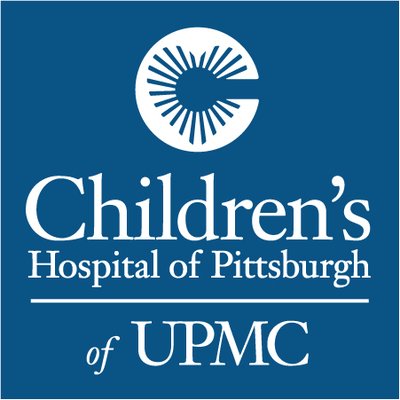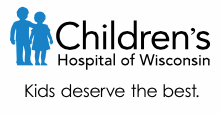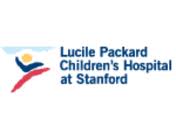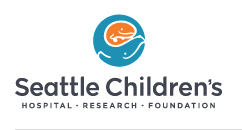Sorafenib in Treating Young Patients With Relapsed or Refractory Solid Tumors or Leukemia
| Status: | Completed |
|---|---|
| Conditions: | Other Indications, Blood Cancer, Hematology, Leukemia |
| Therapuetic Areas: | Hematology, Oncology, Other |
| Healthy: | No |
| Age Range: | 2 - 21 |
| Updated: | 2/24/2019 |
| Start Date: | May 30, 2006 |
| End Date: | September 24, 2012 |
A Phase I/II Study of the Raf Kinase and Receptor Tyrosine Kinase Inhibitor Sorafenib (BAY 43-9006, NSC# 724772) in Children With Refractory Solid Tumors or Refractory Leukemias
This phase I/II trial is studying the side effects and best dose of sorafenib in treating
young patients with relapsed or refractory solid tumors or leukemia. Sorafenib may stop the
growth of cancer cells by blocking some of the enzymes needed for cell growth and by blocking
blood flow to the cancer.
young patients with relapsed or refractory solid tumors or leukemia. Sorafenib may stop the
growth of cancer cells by blocking some of the enzymes needed for cell growth and by blocking
blood flow to the cancer.
PRIMARY OBJECTIVES:
I. Determine the maximum-tolerated dose (MTD) and recommended phase II dose of sorafenib in
pediatric patients with relapsed or refractory solid tumors.
II. Determine whether pediatric patients with relapsed or refractory leukemia can tolerate
the MTD of sorafenib for solid tumors.
III. Determine the tolerability, active N-oxide metabolite, pharmacodynamics, and activity of
sorafenib a the MTD in a subset of patients with acute myeloid leukemia (AML) and FLT3-ITD
mutation.
IV. Determine the toxicities of this drug in these patients. V. Determine the
pharmacokinetics of this drug in these patients.
SECONDARY OBJECTIVES:
I. Determine, preliminarily, the antitumor activity of this drug within the confines of a
phase I trial.
II. Assess the biologic effect of sorafenib on circulating endothelial cells (CEC),
circulating CEC precursors (CECP), VEGF, and VEGF-2 in peripheral blood.
III. Assess the gene expression, proteomic profile, and ERK phosphorylation in blasts of
patients with refractory leukemia treated with this regimen.
IV. Assess the effect of sorafenib on solid tumor vascularity and tumor blood flow using
dynamic contrast-enhanced MRI (DEMRI) in patients with measurable soft tissue tumors.
V. Analyze tumor samples and leukemic blasts for the presence of ras, raf, or FLT3
(leukemias) mutations.
VI. Analyze the plasma inhibitory activity for FLT3 phosphorylation in peripheral blood of
patients with AML and FLT3-ITD mutation.
VII. Determine the tolerability, pharmacokinetics of sorafenib and sorafenib?s active N-oxide
metabolite, pharmacodynamics, and activity of sorafenib administered at the MTD for
refractory leukemias in a subset of patients with AML and FLT3-ITD mutation.
VIII. Analyze the plasma inhibitory activity for FLT3 phosphorylation in peripheral blood
samples obtained at the time of PK studies in patients with FLT3-ITD mutation AML.
OUTLINE: This is a dose-escalation, multicenter study. Patients are stratified according to
diagnosis (malignant solid tumor vs leukemia).
STRATUM I(REFRACTORY SOLID TUMOR PATIENTS): Patients receive oral sorafenib twice daily on
days 1-28. Treatment repeats every 28 days for up to 24 courses in the absence of disease
progression or unacceptable toxicity. Cohorts of 3-6 patients receive escalating doses of
sorafenib until the maximum-tolerated dose (MTD) is determined. The MTD is defined as the
dose preceding that at which 2 of 3 or 2 of 6 patients experience dose-limiting toxicity
(DLT). Once the MTD is determined, up to 6 additional patients under 12 years of age may be
treated at the MTD. The MTD dose level is also expanded to enroll up to 6 patients with
refractory leukemia.
STRATUM II (REFRACTORY LEUKEMIA PATIENTS): A cohort of 3-6 patients with leukemia receives
treatment as in stratum 1 at the MTD determined in stratum 1. If 2 of 3 or 2 of 6 patients
experience a DLT at the solid tumor MTD, sorafenib is reduced by one dose level. The leukemia
MTD is defined as the dose at which < 1/3 of patients experience DLT during course 1 of
treatment.
STRATUM III (ACUTE MYELOID LEUKEMIA AND FLT3-ITD MUTATION PATIENTS): Patients receive
sorafenib as in stratum 1 at the MTD determined in stratum 2. Patients undergo blood sample
collection for pharmacokinetics, pharmacodynamics (in leukemia blasts only), circulating
endothelial cells (CEC), circulating CEC precursors (CECP), VEGF and VEGF-2 , gene
expression, proteomic profile, ERK phosphorylation, and FLT3 phosphorylation activity. Tumor
tissue samples may also be analyzed for the presence of ras, raf, or FLT3.
After completion of study treatment, patients are followed periodically.
I. Determine the maximum-tolerated dose (MTD) and recommended phase II dose of sorafenib in
pediatric patients with relapsed or refractory solid tumors.
II. Determine whether pediatric patients with relapsed or refractory leukemia can tolerate
the MTD of sorafenib for solid tumors.
III. Determine the tolerability, active N-oxide metabolite, pharmacodynamics, and activity of
sorafenib a the MTD in a subset of patients with acute myeloid leukemia (AML) and FLT3-ITD
mutation.
IV. Determine the toxicities of this drug in these patients. V. Determine the
pharmacokinetics of this drug in these patients.
SECONDARY OBJECTIVES:
I. Determine, preliminarily, the antitumor activity of this drug within the confines of a
phase I trial.
II. Assess the biologic effect of sorafenib on circulating endothelial cells (CEC),
circulating CEC precursors (CECP), VEGF, and VEGF-2 in peripheral blood.
III. Assess the gene expression, proteomic profile, and ERK phosphorylation in blasts of
patients with refractory leukemia treated with this regimen.
IV. Assess the effect of sorafenib on solid tumor vascularity and tumor blood flow using
dynamic contrast-enhanced MRI (DEMRI) in patients with measurable soft tissue tumors.
V. Analyze tumor samples and leukemic blasts for the presence of ras, raf, or FLT3
(leukemias) mutations.
VI. Analyze the plasma inhibitory activity for FLT3 phosphorylation in peripheral blood of
patients with AML and FLT3-ITD mutation.
VII. Determine the tolerability, pharmacokinetics of sorafenib and sorafenib?s active N-oxide
metabolite, pharmacodynamics, and activity of sorafenib administered at the MTD for
refractory leukemias in a subset of patients with AML and FLT3-ITD mutation.
VIII. Analyze the plasma inhibitory activity for FLT3 phosphorylation in peripheral blood
samples obtained at the time of PK studies in patients with FLT3-ITD mutation AML.
OUTLINE: This is a dose-escalation, multicenter study. Patients are stratified according to
diagnosis (malignant solid tumor vs leukemia).
STRATUM I(REFRACTORY SOLID TUMOR PATIENTS): Patients receive oral sorafenib twice daily on
days 1-28. Treatment repeats every 28 days for up to 24 courses in the absence of disease
progression or unacceptable toxicity. Cohorts of 3-6 patients receive escalating doses of
sorafenib until the maximum-tolerated dose (MTD) is determined. The MTD is defined as the
dose preceding that at which 2 of 3 or 2 of 6 patients experience dose-limiting toxicity
(DLT). Once the MTD is determined, up to 6 additional patients under 12 years of age may be
treated at the MTD. The MTD dose level is also expanded to enroll up to 6 patients with
refractory leukemia.
STRATUM II (REFRACTORY LEUKEMIA PATIENTS): A cohort of 3-6 patients with leukemia receives
treatment as in stratum 1 at the MTD determined in stratum 1. If 2 of 3 or 2 of 6 patients
experience a DLT at the solid tumor MTD, sorafenib is reduced by one dose level. The leukemia
MTD is defined as the dose at which < 1/3 of patients experience DLT during course 1 of
treatment.
STRATUM III (ACUTE MYELOID LEUKEMIA AND FLT3-ITD MUTATION PATIENTS): Patients receive
sorafenib as in stratum 1 at the MTD determined in stratum 2. Patients undergo blood sample
collection for pharmacokinetics, pharmacodynamics (in leukemia blasts only), circulating
endothelial cells (CEC), circulating CEC precursors (CECP), VEGF and VEGF-2 , gene
expression, proteomic profile, ERK phosphorylation, and FLT3 phosphorylation activity. Tumor
tissue samples may also be analyzed for the presence of ras, raf, or FLT3.
After completion of study treatment, patients are followed periodically.
Inclusion Criteria:
- Diagnosis of 1 of the following:
- Histologically confirmed malignant solid tumor at original diagnosis or relapse
- Measurable or evaluable disease by CT scan or MRI
- Histologically confirmed leukemia, including 1 of the following:
- Acute lymphoblastic leukemia (ALL)
- Greater than 25% blasts in the bone marrow (M3 bone marrow)
- Acute myeloid leukemia (AML)
- Greater than 25% blasts in the bone marrow (M3 bone marrow)
- AML and FLT3-ITD mutation
- Patients must have ? 5% blasts in the bone marrow
- Active extramedullary disease (except leptomeningeal disease) allowed
- Juvenile myelomonocytic leukemia (JMML) meeting the following criteria:
- Peripheral blood monocytosis > 1,000/mm^3
- Blasts (including promonocytes) are < 20% of the WBCs in the blood and
of the nucleated bone marrow cells
- No Philadelphia chromosome (Ph) or BCR/ABL fusion gene
- Has ? 2 of the following additional diagnostic criteria:
- Hemoglobin F increased for age
- Immature granulocytes in the peripheral blood
- WBC > 10,000/mm^3
- Clonal chromosomal abnormality (e.g., may be monosomy 7)
- Sargramostim (GM-CSF) hypersensitivity of myeloid progenitors in
vitro
- Chronic myelogenous leukemia (CML) in blast crisis
- Greater than 25% blasts in the bone marrow (M3 bone marrow)
- Patients with Ph-positive CML must be refractory to imatinib mesylate
- Relapsed or refractory disease
- Patients with acute promyelocytic leukemia (APL) must be refractory to treatment
with tretinoin and arsenic trioxide
- Standard curative therapies or therapies proven to prolong survival with an acceptable
quality of life do not exist
- Active extramedullary disease, except active leptomeningeal leukemia, allowed
- No brain tumors or known brain metastases
- Karnofsky performance status (PS) 50-100% (for patients > 10 years of age)
- Lansky PS 50-100% (for patients ? 10 years of age)
- Patients with solid tumors must have adequate bone marrow function, as defined by the
following:
- Absolute neutrophil count ? 1,000/mm^3
- Platelet count ? 75,000/mm^3 (transfusion independent)
- Hemoglobin ? 8.0 g/dL (red blood cell [RBC] transfusions allowed)
- Patients with leukemia may have abnormal blood counts but must meet the following
criteria:
- Platelet count ? 20,000/mm^3 (platelet transfusions allowed)
- Hemoglobin ? 8.0 g/L (RBC transfusions allowed)
- Patients with acute myeloid leukemia and FLT3-ITD mutation
- Platelet count ? 20,000/mm^3
- Lipase and amylase normal
- Creatinine clearance or radioisotope glomerular filtration rate ? 70 mL/min OR
creatinine normal based on age as follows:
- No greater than 0.8 mg/dL (for patients 5 years of age and under)
- No greater than 1.0 mg/dL (for patients 6-10 years of age)
- No greater than 1.2 mg/dL (for patients 11-15 years of age)
- No greater than 1.5 mg/dL (for patients over 15 years of age)
- Patients with solid tumors must meet the following criteria:
- Bilirubin normal for age
- ALT normal for age (for the purpose of this study, the upper limit of normal
[ULN] for ALT is 45 ?/L)
- Serum albumin ? 2 g/dL
- Patients with leukemia must meet the following criteria:
- Bilirubin (sum of conjugated + unconjugated) ? 1.5 times ULN for age
- ALT ? 5.0 times ULN for age (? 225 ?/L) (for the purposeof this study, the ULN
for ALT is 45 ?/L)
- Serum albumin ? 2 g/dL
- Albumin ? 2 g/dL
- PT, PTT, and INR normal (for patients on prophylactic anticoagulation)
- No evidence of dyspnea at rest
- No exercise intolerance
- Pulse oximetry >94% on room air, if there is clinical indication for determination
- Diastolic blood pressure ? the 95th percentile for age and gender (height included for
AML and FLT3-ITD mutation patients)
- Not pregnant or nursing
- Negative pregnancy test
- Fertile patients must use effective contraception
- No uncontrolled infection
- Able to swallow tablets
- No evidence of bleeding diathesis
- No other medical condition or situation that would preclude study compliance
- No known Gilbert syndrome
- Fully recovered from prior chemotherapy, immunotherapy, or radiotherapy (for patients
with solid tumors)
- Recovered from the non-hematologic toxic effects of all prior therapy (for patients
with leukemia)
- Recovered from acute nonhematologictoxic effects of all prior anti-cancer chemotherapy
(for patients with AML and FLT3-ITD mutation)
- At least 7 days since prior hematopoietic growth factors
- At least 7 days since prior biologic agents
- At least 2 weeks since prior local palliative radiotherapy (small port)
- At least 3 months since prior total-body irradiation, craniospinal radiotherapy, or
radiation to ? 50% of the pelvis
- At least 6 weeks since other prior substantial bone marrowradiation (e.g., skull,
spine, pelvis, ribs)
- At least 3 months since prior stem cell transplantation or rescue (for patients with
solid tumors)
- No evidence of active graft-vs-host disease
- At least 3 months since prior myeloablative therapy followed by bone marrow or stem
cell transplantation (for patients with leukemia)
- At least 3 weeks since prior myelosuppressive chemotherapy (6 weeks for nitrosoureas)
(for patients with solid tumors)
- At least 24 hours since prior nitrosoureas (for patients with AML and FLT3-ITD
mutation)
- At least 2 weeks since prior chemotherapy (for patients with leukemia)
- At least 3 weeks since prior monoclonal antibody therapy
- No prior sorafenib
- No other concurrent investigational drugs
- No other concurrent anticancer agents or therapies, including chemotherapy,
radiotherapy, immunotherapy, or biologic therapy
- Concurrent maintenance-like chemotherapy for patients with AML and FLT3-ITD
mutation allowed
- No concurrent administration of any of the following:
- Cytochrome P450 enzyme-inducing antiepileptic drugs (e.g., phenytoin,
carbamazepine, or phenobarbital)
- Rifampin
- Grapefruit juice
- Hypericum perforatum (St. John wort)
- No concurrent therapeutic anticoagulation
- Concurrent prophylactic anticoagulation (e.g., low-dose warfarin) of venous or
arterial access devices allowed provided the requirements for PT, INR, or PTT are
met
We found this trial at
24
sites
C S Mott Children's Hospital Behind the doors of C.S. Mott Children's Hospital there exist...
Click here to add this to my saved trials
3333 Burnet Avenue # Mlc3008
Cincinnati, Ohio 45229
Cincinnati, Ohio 45229
1-513-636-4200

Cincinnati Children's Hospital Medical Center Patients and families from across the region and around the...
Click here to add this to my saved trials
St. Jude Children's Research Hospital St. Jude is unlike any other pediatric treatment and research...
Click here to add this to my saved trials
Children's Hospital of Orange County For more than 45 years, CHOC Children’s has been steadfastly...
Click here to add this to my saved trials
Children's Hospital of Philadelphia Since its start in 1855 as the nation's first hospital devoted...
Click here to add this to my saved trials
4401 Penn Avenue
Pittsburgh, Pennsylvania 15224
Pittsburgh, Pennsylvania 15224
412-692-5325

Children's Hospital of Pittsburgh of UPMC UPMC is one of the leading nonprofit health systems...
Click here to add this to my saved trials
3181 Southwest Sam Jackson Park Road
Portland, Oregon 97239
Portland, Oregon 97239
503 494-8311

Oregon Health and Science University In 1887, the inaugural class of the University of Oregon...
Click here to add this to my saved trials
9000 Rockville Pike
Bethesda, Maryland 20892
Bethesda, Maryland 20892
301-496-2563

National Institutes of Health Clinical Center The National Institutes of Health (NIH) Clinical Center in...
Click here to add this to my saved trials
Click here to add this to my saved trials
Dana-Farber Cancer Institute Since it’s founding in 1947, Dana-Farber has been committed to providing adults...
Click here to add this to my saved trials
Click here to add this to my saved trials
Click here to add this to my saved trials
Click here to add this to my saved trials
Riley Hospital for Children Riley Hospital for Children at IU Health is a place of...
Click here to add this to my saved trials
535 Barnhill Dr
Indianapolis, Indiana 46202
Indianapolis, Indiana 46202
(888) 600-4822

Indiana University Melvin and Bren Simon Cancer Center At the IU Simon Cancer Center, more...
Click here to add this to my saved trials
9000 W Wisconsin Ave #270
Milwaukee, Wisconsin 53226
Milwaukee, Wisconsin 53226
(414) 266-2000

Children's Hospital of Wisconsin Nothing matters more than our children. At Children's Hospital of Wisconsin,...
Click here to add this to my saved trials
Click here to add this to my saved trials
Click here to add this to my saved trials
725 Welch Rd
Palo Alto, California 94304
Palo Alto, California 94304
(650) 497-8000

Lucile Packard Children's Hospital Stanford University Stanford Children's Health is the only network in the...
Click here to add this to my saved trials
660 S Euclid Ave
Saint Louis, Missouri 63110
Saint Louis, Missouri 63110
(314) 362-5000

Washington University School of Medicine Washington University Physicians is the clinical practice of the School...
Click here to add this to my saved trials
Seattle Children's Hospital Seattle Children’s Hospital specializes in meeting the unique physical, emotional and developmental...
Click here to add this to my saved trials
Click here to add this to my saved trials
Click here to add this to my saved trials
111 Michigan Ave NW
Washington, District of Columbia
Washington, District of Columbia
(202) 476-5000

Childrens National Medical Center As the nation’s children’s hospital, the mission of Children’s National Medical...
Click here to add this to my saved trials






